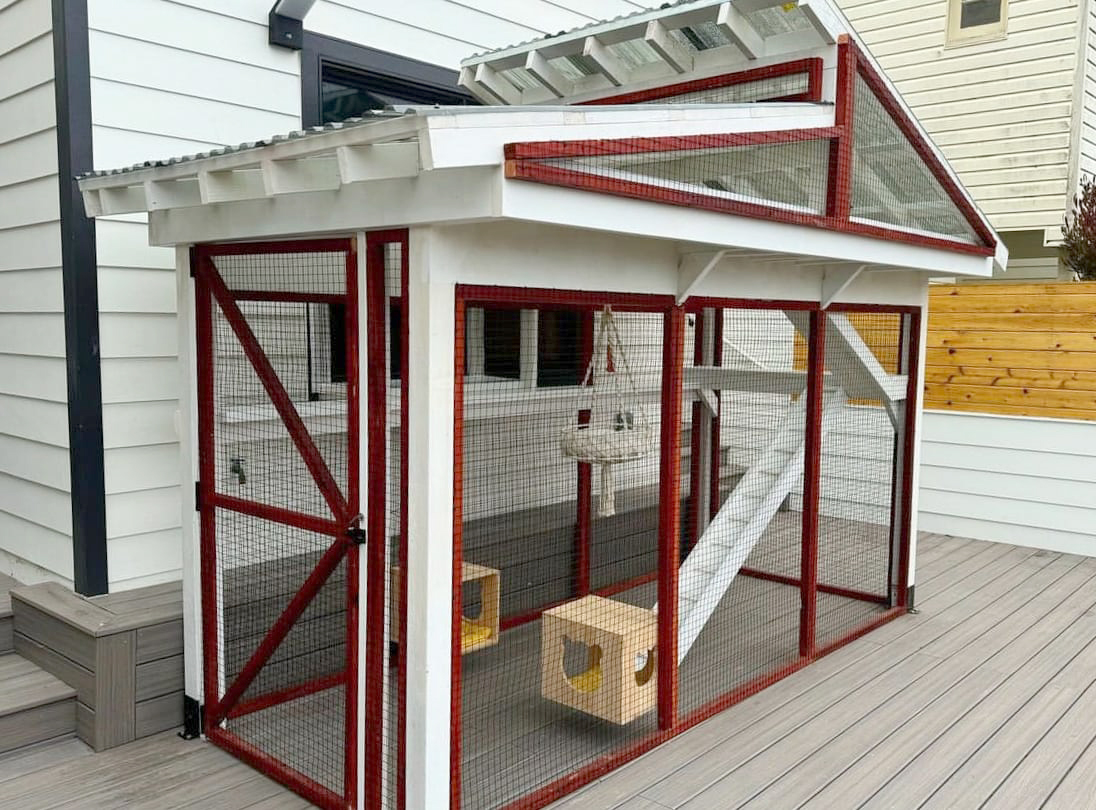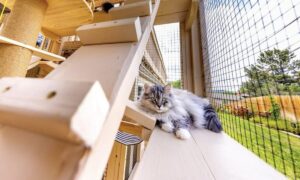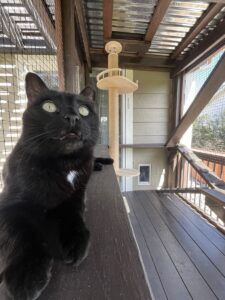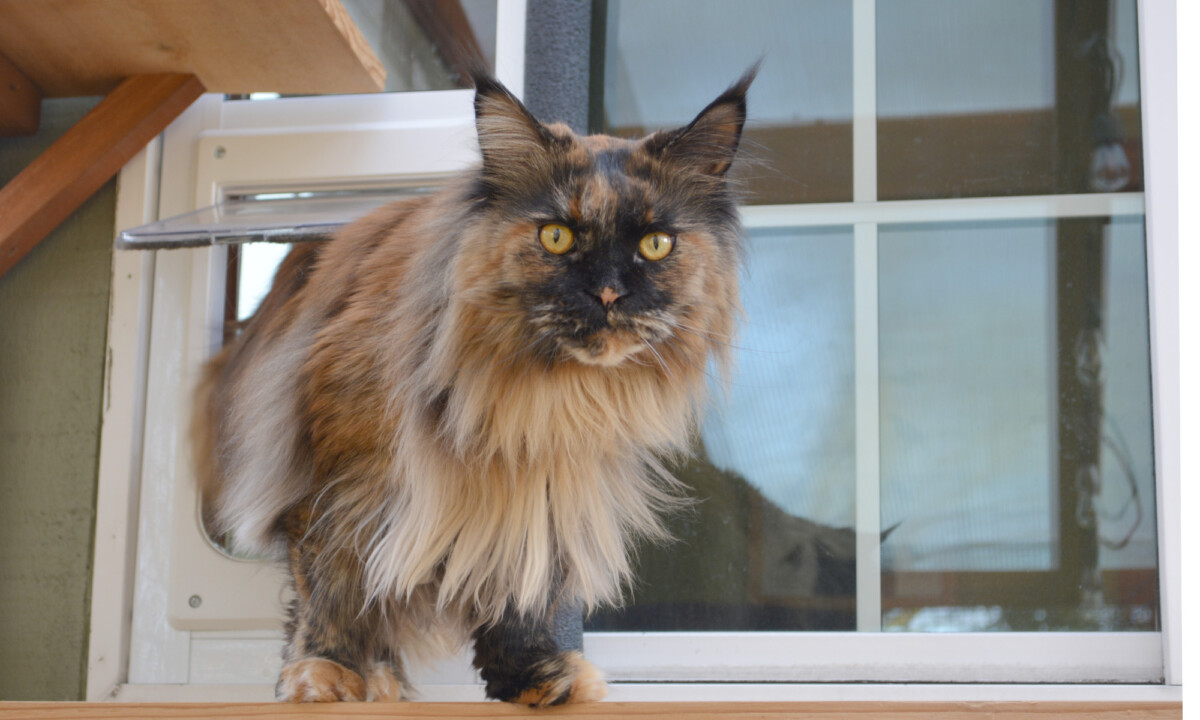Cats are amazing creatures with a natural ability to climb, scratch, chase, and hunt. They have active minds which require that they have opportunities to engage in these instinctive qualities. Yet, just like humans lose a skill they don’t practice, cats also need to consistently practice their skills to remain healthy. A way that cats are able to accomplish this is by going out into their natural environment, outside of the home. When outdoors, they have access to raw organic materials that spark curiosity, exploration, and playfulness. Cats are able to roam, explore, and enrich their minds.
However, with the outdoors, there are inevitable risk factors to consider. Some risks include predators, roaming away from home and becoming lost, or the cat engaging in its natural instincts like hunting birds or other wildlife, damaging the ecosystem. These are only a few of the risks, but it’s enough to draw concern from responsible and considerate cat owners to opt into keeping a cat indoors exclusively.
With indoor cats, there is a sense of safety and security for owners in knowing their cats cannot wander off, hunt other animals, or be injured or killed. They remain in very controlled environments which often leads to the owners’ peace of mind. Being indoors, however, can lead cats to experiencing boredom, which can result in a range of negative physical, behavioral, and emotional effects. Some risks are mental and emotional distress, such as anxiety and depression, and health issues like obesity, destructive behavior like scratching furniture or chewing on objects, and aggression, such as hissing, swatting, or biting due to poor stimulation in their predictable environment.
knowing their cats cannot wander off, hunt other animals, or be injured or killed. They remain in very controlled environments which often leads to the owners’ peace of mind. Being indoors, however, can lead cats to experiencing boredom, which can result in a range of negative physical, behavioral, and emotional effects. Some risks are mental and emotional distress, such as anxiety and depression, and health issues like obesity, destructive behavior like scratching furniture or chewing on objects, and aggression, such as hissing, swatting, or biting due to poor stimulation in their predictable environment.
What is the way to address these legitimate concerns? How do cat owners find the balance between allowing cats to engage in their natural behaviors and ensure their safety and security? The answer is catios.
What is a Catio and How Does it Serve My Cat?

A catio is an enclosed outdoor space that allows cats to safely and securely experience the outdoors. Catios offer the best of both worlds: your cat can enjoy the stimulation of the outside world—like climbing, scratching, roaming, watching wildlife, or basking in the natural elements of their environment—without being exposed to the risks of environmental changes, free-roaming, being harmed by predators, or hunting wildlife. Catios also provide many mental and physical health benefits. These include promoting physical exercise, enhancing mental stimulation, reducing risk of injury and disease, encouraging natural behaviors, and improving overall health and wellness. The combination of physical exercise, mental stimulation, and a safe and secure environment leads to improved overall wellness for your cat.
Tips on Building Your Own Catio
Building your own catio might feel overwhelming at first, but with these steps, we’ll guide you through the process so your cat can start enjoying the benefits in no time!
1. Planning Your Design
Location, location, location! The first step in building your catio is assessing your space. Do you have a spot in mind that offers both ample sunlight and shade? Is it situated in a safe, quiet area? Choosing the right location is crucial—it should be far from busy streets and bustling sidewalks, providing your cat with a serene place to de-stress and relax.
2. What Materials Should You Use?
Lumber: Choosing the right lumber to use is essential. Opt for weather-resistant woods such as cedar or redwood. These materials are not only durable, but also naturally resistant to rot and insects, ensuring your catio stands up to the elements. Avoid treated lumber with toxic chemicals, as this can pose health risks to both your cats and the environment.
Screening: Opt for durable, pet-safe, mesh-like, vinyl-coated wire or stainless steel to ensure your cat’s safety. Steer clear of chicken wire as it lacks the strength to handle your cat’s climbing and scratching and can be easily breached by predators. For a deeper dive into the best screening options for a catio, explore this informative article.
stainless steel to ensure your cat’s safety. Steer clear of chicken wire as it lacks the strength to handle your cat’s climbing and scratching and can be easily breached by predators. For a deeper dive into the best screening options for a catio, explore this informative article.
Roofing: A sturdy roof is essential to safeguard your cats from predators like hawks or raccoons. Consider using durable materials like corrugated polycarbonate or metal roofing to provide protection from rain, snow, and unwanted intruders. Additionally, select materials that allow for proper ventilation to ensure adequate airflow to maintain your cat’s comfort.
3. Safety First
Predator protection: Build your catio on a solid foundation to prevent predators from digging underneath, particularly if it’s located on soft grass or an unstable surface. Use strong, predator-resistant screening designed to withstand attempts from animals like coyotes and hawks.
Stability: Thoroughly inspect the structure to ensure stability. Confirm that all corners are tightly fastened and free from sharp edges that could pose a safety risk. Secure all components with multiple screws to ensure the catio can endure outdoor conditions and your cats’ activity.
Escape prevention: Carefully inspect the catio for any gaps, particularly at the corners and along the base, where cats might try to squeeze through or dig. Make sure every part of the enclosure is securely sealed to prevent escapes. Cats are notorious for finding even the tiniest openings.
4. Enrichment Essentials: Fun Additions for Your Cat’s Catio
- Install ramps, tunnels, hammocks, and perches for hours of
 entertainment.
entertainment. - Include safe plants like cat grass or catnip for a touch of nature. As a bonus, this doubles as a snack station.
Conclusion
In a world filled with hazards, it can be hard to find or experience a sense of safety and security for our beloved cats. Finding the balance of indoors and outdoors is tricky, but it can be done. Catios are the best option for creating a healthy level of control, ensuring safety, security, and endless possibilities for enrichment and joy for cats. Catios give owners peace of mind, and cats the freedom to grow and thrive.




